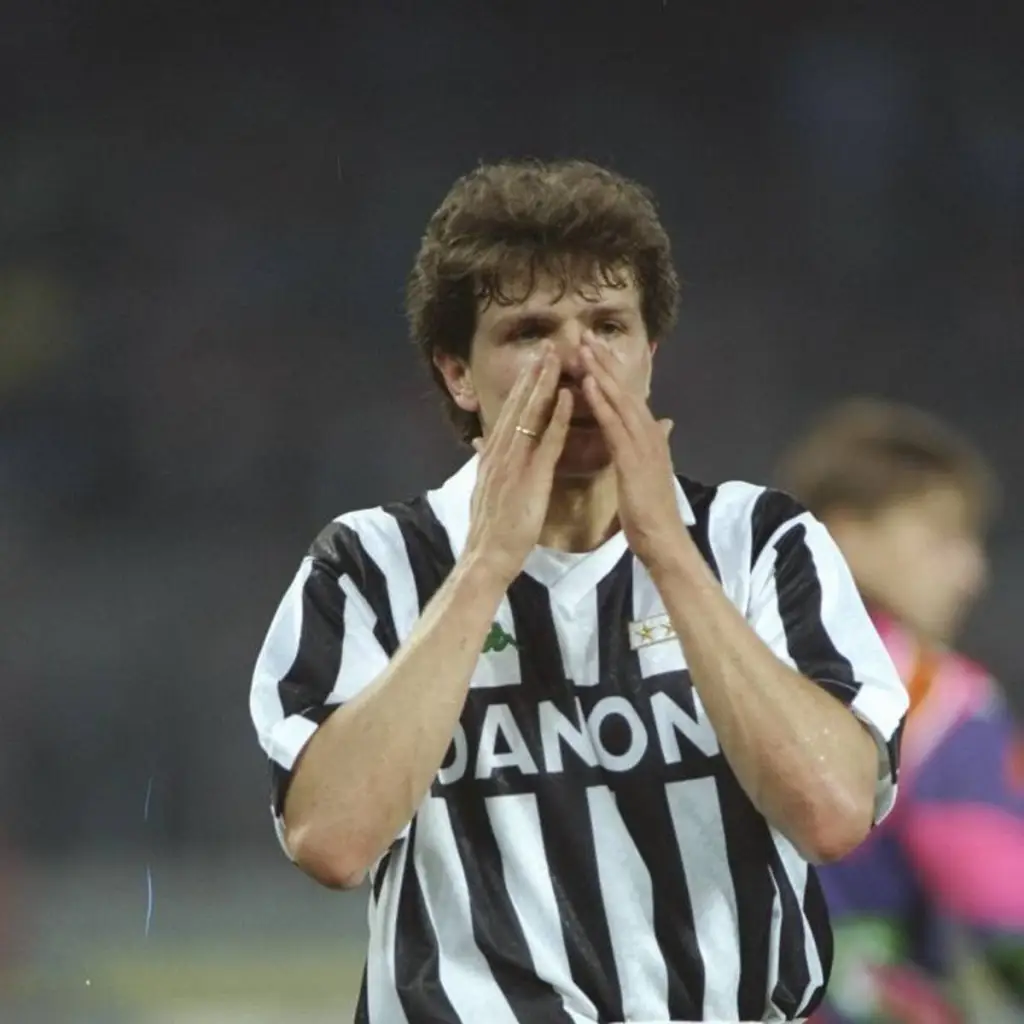In 1992, Simply Red sang Stars, while German Eurodance group, Snap! rose to prominence when they released the instant classic Rhythm is a dancer. They became definitive records of the era. Over in Italy, Juventus were making their own statement of intent as they tempted Andreas Möller to Turin.
The 24-year-old arrived from Eintracht Frankfurt – his hometown club – for a fee of ₤3,5 million. The Juve that landed Möller were a very different side from the one which is currently ruling Serie A.
In fact, the Bianconeri had not won the Scudetto since 1986 and had just endured the catastrophic Gigi Maifredi experiment in 1990-91. The club turned to former manager Giovanni Trapattoni in the hope of returning to their glory days.
It wasn’t an easy task as the Turin-based side had to face an AC Milan who, under Fabio Capello, were still dominant following the Arrigo Sacchi era.
To challenge the Rossoneri, Juventus spent heavily in 1992, acquiring Gianluca Vialli from Sampdoria for a world record fee of £12.5 million, in addition to David Platt from Bari and youngster Fabrizio Ravanelli from Reggiana. They also brought back Dino Baggio, joining his namesake Roberto, after his loan spell at Inter Milan and added former amateur defender Moreno Torricelli.
Trapattoni’s tactical approach was to utilize Roberto Baggio up front as a second forward, in order to create space for Möller in the midfield. The former Eintracht star was an attacking midfielder, but this position did not feature in Trappattoni’s system. Instead, the veteran coach deployed him as interior midfielder, forward or as a winger.
In this regard, it is worth mentioning that Möller’s arrival, originally planned for the previous campaign, had been postponed due to a supposed tactical incompatibility with Roberto Baggio.
That said, Trapattoni’s gamble worked as the ‘Divine Ponytail’ enjoyed one of his best seasons, leading Juventus to the 1993 UEFA Cup – their third triumph in the competition – whilst Möller quickly became a key player.
Möller earned a place in his fans’ hearts after a series of strong performances, starting with the 4-1 dismantling of Atalanta on the second Serie A matchday, in which he scored his first goal for Juventus.
Further impressive displays followed as he broke the deadlock against Roma, and scored a pivotal goal in a 3-2 away win at Napoli.
A technically gifted player who was proficient with both feet, Möller was also well-built and athletically durable. The 1990 World Cup winner was the complete package, and his all-round athleticism ensured that he was able to adapt and thrive in a number of different positions on the pitch.
With Vialli and Roberto Baggio leading the line, Möller was tasked with providing incisive through balls or accurate crosses for the duo. However, he also had a role to play as a goalscorer, as despite Trap’s reputation as the master of Catenaccio, his Juventus side attacked the offensive third of the field in great numbers, which explains the impressive goal tallies for midfielders during both the 1992/93 and 1993/94 seasons. Möller himself registered 30 goals across all competitions in his two campaigns at the club.
Although they possessed undeniable firepower up front, Trapattoni’s Juventus were unable to deny Milan. Trap’s second and final experience as the Bianconeri’s coach lasted just two seasons before he was replaced by Marcello Lippi in 1994.
Lippi’s arrival also ended Möller’s stint in Turin. He rejoined Borussia Dortmund and proved his class by winning the 1997 Champions League final against none other than Juventus.
Having played in an unsuccessful side alongside other prominent names such as Roberto and Dino Baggio, Vialli, Julio Cesar, and German teammate Jürgen Kohler, Möller’s time at the club is often overlooked by supporters.
Yet there should be no doubting his ability or talent. Möller ought to be remembered as one of the most gifted players to wear the black and white shirt in the last 30 years.
Words by Michele Tossani: @MicheleTossani
Image courtesy of sport1.de

